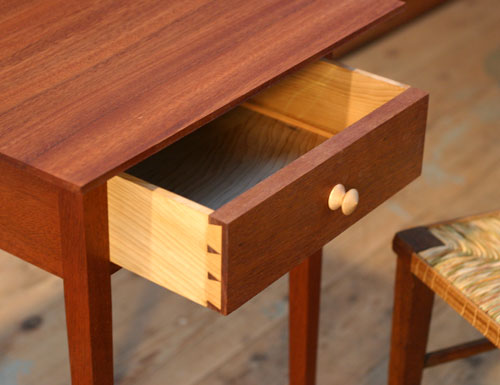KarenMakin
New member
Hello!
I'm reasonably new to both woodworking and brand new to the forum so apologies if this is too basic or been previously covered.
I'm trying to recreate (as closely as possible) the deep, rich mahogany finish of an older Victorian item on a newly created similar piece but I'm having trouble recreating the colour and finish. The new piece has been made from mahogany but I'm unsure what type.
Here's the two together (old on left, new on right)

And here's a better pic of the colouring on the old one:

I've tried curing the new piece under UV lamps (50+ hours) which has certainly darkened it but not to the degree I'd like. I've also tried various combinations of Liberon Wood Dyes in both Victorian and Georgian Mahogany and also some Rustins Wood Dye in Ebony in for good measure but the colour seems to come out more brown than the deeper red hues I'm after.
I've also been told to use Morrell's Nitrocellulose spray laquer instead of French Polish as I'd find this easier to apply with me being a beginner. This goes on nicely and is creating shine but I wonder if the depth in colour on the original is in part due to the French Polish.
Whilst I realise I'll never get the 'aged' look perfectly without a 100+ years or so, you do see the finish and colour I'm after on lots of modern furniture so I'm hoping someone can help as I'm now completely lost with it!
Can anyone suggest a stain or finish type or combo and a final finish that'll get me the look and colour I'm after?
Many thanks in advance,
Karen
I'm reasonably new to both woodworking and brand new to the forum so apologies if this is too basic or been previously covered.
I'm trying to recreate (as closely as possible) the deep, rich mahogany finish of an older Victorian item on a newly created similar piece but I'm having trouble recreating the colour and finish. The new piece has been made from mahogany but I'm unsure what type.
Here's the two together (old on left, new on right)

And here's a better pic of the colouring on the old one:

I've tried curing the new piece under UV lamps (50+ hours) which has certainly darkened it but not to the degree I'd like. I've also tried various combinations of Liberon Wood Dyes in both Victorian and Georgian Mahogany and also some Rustins Wood Dye in Ebony in for good measure but the colour seems to come out more brown than the deeper red hues I'm after.
I've also been told to use Morrell's Nitrocellulose spray laquer instead of French Polish as I'd find this easier to apply with me being a beginner. This goes on nicely and is creating shine but I wonder if the depth in colour on the original is in part due to the French Polish.
Whilst I realise I'll never get the 'aged' look perfectly without a 100+ years or so, you do see the finish and colour I'm after on lots of modern furniture so I'm hoping someone can help as I'm now completely lost with it!
Can anyone suggest a stain or finish type or combo and a final finish that'll get me the look and colour I'm after?
Many thanks in advance,
Karen



































